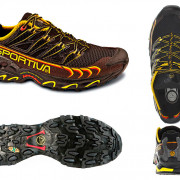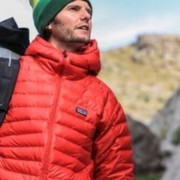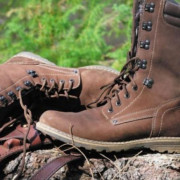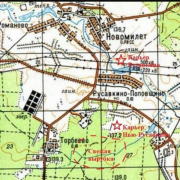Мировой авторитет в области шерсти объединяет свои знания и опыт вместе с norveg
Содержание:
- Merino wool base-layers for men
- Why wear Merino wool base-layers and thermals?
- Международная премия Woolmark
- Merino wool versus cashmere
- Worsted Spinning
- Кэшбэк бонусными баллами от 3%
- Merino wool underwear and thermals
- Natural versus synthetic fibres
- Какая шерсть маркируется знаком Woolmark
- Merino wool base-layers for women
- Woolmark
- Combing
- Different types of wool
- История
- Drawing
- Gilling
- Carding
- How is Merino wool made?
Merino wool base-layers for men
Base-layers for men are an easily integrated part of the wardrobe, seamlessly fitting under existing garments. Best made from Merino wool, they are a comfortable, lightweight addition to your daily outfit. Whether long-sleeve, short-sleeve or all-in-one, they can be the perfect way to help make sure your outer clothing remains sweat-free and protects you from the precarious elements of nature.
Short-sleeve base-layers or sleeveless vests can easily be worn under business shorts or T-shirts for a seamless finish. Lightweight and comfortable, they are designed to be close fitting to the body in order to absorb moisture vapour and keep your body cool, especially in warmer climates.
When the weather cools, long-sleeve Merino base-layer tops are great at regulating heat and protecting your body from the cold.
Why wear Merino wool base-layers and thermals?
- Superior breathability
- Moisture wicking
- Thermoregulation
- Odour resistant
Merino wool base-layers offer warmth without the weight and are often worn in everyday life, or during sporting activities such as running, skiing or climbing, allowing for multiple wears before tossing in the wash. There are many base-layers available made from synthetic fibres, yet no other fibre can match all of Merino wool’s inherent benefits.
Merino wool base-layers and thermals are often worn underneath a mid-layer and/or outer-layer of clothing. However, particularly in warmer months, base-layers can be worn on their own and are naturally soft against the skin.
Международная премия Woolmark
В 1953 году IWS учредила международную премию Woolmark Prize, победителями которой стали Ив Сен-Лоран и Карл Лагерфельд . Премия по-прежнему присуждается выдающимся дизайнерам со всего мира. Позже он был приостановлен.
Международная премия Woolmark была возобновлена в 2012 году преемницей IWS, компанией Woolmark (TWC). Целью награды является создание долгосрочного спроса на шерсть австралийского мериноса за счет повышения осведомленности и неизменной приверженности к волокну среди дизайнеров конкурса по всему миру. Награды 2020 года были вручены в феврале 2020 года на Лондонской неделе моды .
Merino wool versus cashmere
- Merino wool comes from Merino sheep – the breed of sheep offering the finest wool for luxury apparel and technical sportswear.
- Cashmere comes from the hair of goats.
- Years of innovative breeding have resulted in some ultrafine Merino wools to be naturally even finer than cashmere.
- The world’s best Merino wool comes from Australia, which provides 81% of the world’s superfine wool, from woolgrowers who employ sustainable farming practices.
- Cashmere primarily comes from Mongolia and China.
- One sheep provides about 4.5 kilograms of wool fleece, whereas one goat provides only 0.2-0.3 kilograms of cashmere down fibres.
- Merino wool is very easy to care for, with many wool clothes able to be washed in the washing machine.
Worsted Spinning
During worsted spinning the roving is first drafted, in the drafting zone on the spinning machine, before entering the twisting zone where a predetermined amount of twist is inserted to produce a singles (1xply) yarn.
The yarn is then wound on a winding machine which is fitted with a clearing device, detecting and removing any faults such as thick and thin places, neps and slubs.
Today most winding machines are fitted with a pneumatic splicing device in order to join or splice the ends of broken yarns, rather than tie and produce knots.
Although some yarns are sold and used in singles form, such as 1xply, the majority undergoes a twisting process where two singles yarns are twisted together to produce a two-fold, or 2xply, yarn.
After twisting, the yarn is then re-wound onto suitable packages either for knitting or for weaving. Wax is applied during the final winding of yarns destined for the knitting industry in order to reduce and even out the yarns’ frictional properties, enabling trouble-free knitting.
Longer wool fibres are used in the production of worsted-spun wool yarns for weaving to produce a yarn which is very strong to withstand the rigors of weaving, and also to produce very smooth woven fabrics. Whereas for knitting yarns, shorter fibres are produced to produce more bulky yarns — the more wool fibre ends per unit length of yarn, the more bulky the yarn will be. Too short a fibre length can lead to poor performance of the final product such as pilling in knitwear.
When producing wool yarns either for machine knitting or weaving of acceptable quality , there are many important parameters to take into consideration. These include:
- yarn count (Nm) and yarn count variation
- twist levels (turns per metre) and variation; in the case of a two-fold yarn the ratio in percentage terms between the twist levels in the single yarn and the folding twist is very important. This factor is known as the twist balance.
- yarn frictional properties
- yarn strength and elongation
- irregularity (U %)
- number of faults: thick and thin places and neps.
Кэшбэк бонусными баллами от 3%
Как накопить бонусные баллы
- Совершите любую покупку и получите кэшбек 3% от ее стоимости на Ваш личный счет в виде бонусных баллов.
- Поделитесь своими впечатлениями о покупке в карточке товара или оцените работу магазина в разделе «Отзывы», и Ваш счет пополнится 150 баллами.
- Оставьте отзыв о магазине или продукции на «Яндекс.Маркете». После модерации Вам будут начислены 250 бонусов.
Один бонусный бал эквивалентен одному рублю. Проверить сколько бонусов на вашем счете можно во вкладке «Скидки и бонусы».
Как потратить бонусные баллы
- Оплачивайте до 20% от стоимости покупки бонусными баллами. Для этого в корзине при оформлении заказа надо выбрать опцию «Оплатить бонусными баллами» и указать количество баллов, подлежащих списанию.
- Приобретайте за бонусные баллы полезные товары для всей семьи, которые находятся в разделе «Скидки и бонусы».
Merino wool underwear and thermals
Great for all year round, Merino wool underwear will be the most comfortable item you wear next to skin. Soft and breathable, Merino wool underwear is the last line of defence so its resistance to odour is also highly beneficial, particularly when choosing a sports bra or crop top.
Merino wool underwear, both short legged and full-length, can be worn beneath jeans or pants to provide an additional layer of protection against the weather. Merino wool sports bras and crop tops are popular for hiking, cycling or indoor exercise such as yoga, pilates and barre.
All-in-one layers and Merino thermals are reserved for more severe winter weather conditions or for outdoor activities that require a more thorough protection.
Natural versus synthetic fibres
Natural fibres are produced by animals (wool) and plants (cotton) as fibrous materials that can be spun into yarn. Characteristics of natural fibres are that they:
- Serve a purpose in nature;
- Are produced by a living organism; and
- Grow spontaneously, without need for human intervention.
Synthetic fibres are derived from fossil-fuelled/petroleum-based oils.

Comparison of common apparel fibres.
Wool – along with alpaca and cashmere – has a unique scale structure, with differing patterns depending on the animal which they come from. Cellulosic fibres – cotton, silk and linen – and synthetic fibres such as polyester do not have these unique scales. These scales are important for protection, felting behaviour and the handle of finished products such as apparel. They also provide a natural water-resistant surface.
Какая шерсть маркируется знаком Woolmark
Логотип Woolmark на изделии означает, что оно произведено из натуральной шерсти. Этот знак – собственность организации. Международный Секретариат Шерсти контролирует качество шерсти и исследует возможности улучшения срока эксплуатации шерстяной продукции. При этом в приоритете эстетичное оформление продукции. Изделие, маркированное как «натуральная шерсть», обязано отвечать ряду параметров. Сырье для его изготовления должно браться только с животного, остриженного живым. Содержание волокон иных материалов допускается, но не более 7%. Если данные критерии соблюдены, шерсть маркируется специальным знаком.
В каждой сфере есть свой эталон качества. К примеру, эталоном автомобиля на протяжении многих лет является Mercedes, а известнейшим напитком считают Coca-Cola. Так вот, Woolmark – это шерстяное клеймо, являющееся своеобразным эталоном в мире шерстяных изделий. Когда потребитель видит его на продукции, он подсознательно понимает, что лучшего качества ему не найти.
Merino wool base-layers for women
Base-layers provide women a guard against the weather while offering a simple, effective solution to regulating body heat as they move about their day. Made from lightweight Merino wool, women’s base-layers come in a variety of thickness and styles that are alternated according to seasonal needs. Knowing which style is the right match for which season or situation is the first step when it comes to investing in the right base layers for you.
Like Merino wool-base-layers for men, women also have the option of short-sleeve tops or vests, which are perfect for summer months.
These can be worn under work shirts, jackets and dresses and are also ideal for wearing whilst performing outdoor activities and sports such as cycling, running and hiking.
As winter sets in, thicker varieties that offer a more complete covering of the body are preferred during this season. Slightly heavier Merino wool, although still lightweight, comfortable and breathable, will provide additional warmth while absorbing any moisture vapour that the body produces, keeping you comfortable all day long. Merino wool leggings, either in the form of more lightweight underwear, short-legged pants or thicker activewear, can be worn beneath jeans or trousers as an additional layer against the cold weather.
Woolmark
Шерстяной платок
Woolmark логотип был разработан IWS, то под контролем двух австралийцев, Уильям (Archer) Ганн (1914-2003) , который был председателем и Уильям Vines (1916-2011) в качестве управляющего директора.
Сертификационный знак, используемый на изделиях из чистой шерсти, которые соответствуют стандартам качества, установленным IWS. Логотип был запущен в августе 1964 года после того, как он был выбран после 1963 конкурса выигран миланского Франческо Saroglia (наиболее вероятно, псевдоним , выбранный дизайнером Франко Grignani ).
Две основные цели заключались в том, чтобы вывести шерсть на вершину текстильного рынка и гарантировать, что продукты, отмеченные знаком Woolmark, производятся из чистой новой шерсти и производятся в соответствии с высочайшими стандартами. Это был такой успех, что в конечном итоге он был отмечен как большая раковина морского гребешка или трехконечная звезда с точки зрения признания и понимания потребителями.
В 2011 году британский дизайнерский журнал Creative Review объявил Woolmark номером один из двадцати лучших логотипов всех времен.
Combing
In the worsted system, wool is combed, and in the case of the production of fine wool yarns, is combed twice (known as re-combing) to ensure a better quality of yarn can be produced.
The objectives of combing are:
- To remove short fibres, known as noils, which if allowed to remain would result both in lower efficiency during the subsequent spinning operation, inferior appearance (less smooth fabrics) and wear performance (pilling)in the final articles of clothing
- Removal of neps (very small clusters of fibres), most of which are formed during the carding operation
- Removal of any traces of any remaining vegetable matter (such as burrs, seeds, grass).
Noils and Neps are invariably not wasted or thrown a way; they are sold for processing on the woollen system.
Card slivers which contain short fibres, neps and vegetable matter are fed into the comb, or combing machines, and emerges free from these in the form of a combed sliver.
The action of the combing machine is discontinuous and involves brushing a fringe of fibres through a series of fine combs.
A set of nipper rollers grip only the long combed fibres. The fringe of the long fibres is then laid on the previously extracted fringe and the new combed sliver is formed. The short fibres are discarded.
Different types of wool
Not all wool is the same. Some wool is softer than cashmere, while others are hardier and more resilient, suitable for carpets and bedding. Wool can be divided into three main categories, based on the micron (diameter) of each fibre. One micron is equal to one millionth of a metre and fibre length is recorded in millimetres – these are the main measurements which determine the quality and use of the wool.
- Fine: Wool with the finest micron comes from Merino sheep and is used for high-quality, soft-handling fabrics and knitting yarns. Fine wool is highly valued by the world’s leading fashion houses and is the hero ingredient of many Woolmark collaborations.
- Medium: Medium micron wool can be produced from a type of Merino or produced by crossing one breed with another (crossbreeding). Medium wools are used in a variety of woven apparel cloths, knitting yarns and furnishings.
- Broad: Many different sheep breeds produce broader wools. Often these breeds are known as dual-purpose breeds because they are farmed with equal emphasis on meat and wool. Broad wool is useful for products such as carpets because of its strength and durability
The average micron of human hair is between 50 to 100 micron. Merino wool is generally less than 22 micron, which shows just how soft this premium fibre is.
История
В 1936 году в ответ на резкий рост производства искусственных волокон, таких как вискоза (теперь полиэстер ), используемых вместо шерсти, шерстяники в трех основных странах-производителях шерсти во главе с Австралией проголосовали за введение сбора в размере 6 пенсов за каждую. тюк шерсти произведен, средства идут на исследования и продвижение. (Только Германия произвела 9 200 тонн этих искусственных волокон в 1934 году, 19 600 тонн в 1935 году и 45 000 тонн в 1936 году. Предполагалось, что производство в 1937 году составит 90 000 тонн.) 1 июля 1937 года они создали International Wool Publicity и Исследовательский секретариат , который был быстро переименован в Международный секретариат шерсти (IWS). К середине 1950-х у IWS, базирующегося в Лондоне, были офисы во всех крупных странах-производителях шерсти.
В 1964 году IWS разработала и выпустила логотип Woolmark.
В декабре 1993 года Австралийская шерстяная корпорация (образованная в 1973 году) и Корпорация исследований и разработок шерсти были объединены в Австралийскую организацию по исследованию и продвижению шерсти (AWRAP). Международный секретариат по шерсти (IWS) и Australian Wool Innovation Limited (AWI) были дочерними компаниями AWRAP.
В 1997 году название IWS было изменено на The Woolmark Company Pty Ltd (TWC).
В 2001 году была создана компания Australian Wool Services Limited (AWS) для решения 36 унаследованных проблем, возникших более чем 80 лет назад предыдущими администрациями, включая AWRAP и две ее дочерние компании. AWI был отделен от AWS в 2002 году, а TWC был продан AWS компании AWI в 2007 году.
То, что осталось от AWS, превратилось в Graziers ‘Investment Company Limited (GIC), которая была ликвидирована в октябре 2017 года с 20 миллионами австралийских долларов на банковском счете. По состоянию на март 2020 года GIC была близка к завершению ликвидации.
Drawing
Prior to spinning, the combed sliver undergoes a series of additional gilling operations to realign the hooked-shaped fibres into the trailing position, and to ensure complete intermixing of the wool fibres, resulting in a complete homogenous blend.
The sliver then undergoes an operation known as drawing, by passing through a roving machine. During drawing the linear weight of the sliver (grams per metre) is significantly reduced, producing what is known as a roving. The roving machine, also by means of a rubbing action, compacts the roving in order to hold the fibres together and thus minimises the chance of breakage during the subsequent spinning operation.
Although coarse yarn counts can be produced on the worsted spinning system in comparison to woollen spinning, much finer yarn counts can be, and are usually produced, both for knitting and weaving.
Gilling
A series of gilling is carried out before (on card sliver) and after the combing stage (on combed sliver), to achieve the following objectives:
- Further blending of the wool fibres to produce a homogenous blend
- Further alignment of parallelisation of the fibres in the sliver
- Ensure that hooked-shaped fibres produced during the carding process are positioned in the best direction, such as a trailing position, in order to minimise fibre breakage during subsequent processing stages
- To even out or uniform the linear weight of the sliver (grams per metre) throughout.
The latter is achieved by passing the wool at least once through a special gilling machine which has an auto-levelling device, which continuously detects the linear weight of the slivers being fed into the machine, and speeds up or slows down the machine accordingly. For example, if the slivers entering the machine are on the heavy side then the machine will speed up and vice versa. The net result is that the sliver emerging from the machine has a uniform linear weight (grams per metre) along its entire length.
Gilling machines have two sets of rotating rollers — the feed or back roller, and the delivery or front roller. Positioned in-between these rollers is a bed of moving pinned combs.
The delivery rollers always are set to operate faster (RPM) than the feeding rollers, and the ratio in terms of their relative difference in speed is known as the draft. The draft can be adjusted to determine the linear weight (grams per metre) has it emerges from the gilling machine.
The feed rollers feed a number of slivers into the machine. Delivery rollers grab the slivers and draw them through the bed of moving combs, combining the fibre mass to result in a single sliver exiting the machine.
Carding
Prior to carding, an accurate amount of synthetic processing lubricant and water is mixed together and applied to the now blended and conditioned scoured loose wool. The purpose of the lubricant is to reduce fibre to metal friction, and water reduces the formation of static. If either occurs during the carding process it is more than likely this will lead to excessive fibre breakages and reduce processing efficiency.
Typically the amount of residual grease remaining on scoured wool is about 0.3% to 0.5% by weight, which is actually a good thing, because wool grease in itself is a good processing lubricant. The amount of synthetic processing lubricant applied, taking into account the actual amount of wool grease present, is to increase the amount of Total Fatty Matter in percentage terms (%T.F.M) to the optimum for effective processing on the worsted system which is 0.8% +-0.2%.
Although during the scouring process one of the aims is to minimise the degree of fibre entanglement, a certain degree invariably occurs. The result is that the scoured loose wool tends to form in clumps or flocks of entangled fibre.
The purpose and objectives of carding is to
- disentangle these clumps, by separating them into individual fibres
- align the fibres parallel to each other
- remove short fibres
- further blend the fibres by intermixing
- remove as much of any remaining contaminants, such as vegetable matter (seeds, grass, burrs etc.), as well as dirt and dust
- formation of a homogeneous web in terms of weight per unit area
- condense the web into a continuous length of fibre known as a card sliver
Although all occur, the success of carding is dependent upon achieving the above with minimal fibre breakage, minimal hook formations (fibres which take the form of a hook, rather than being straight), and minimal neps (very small clusters of short wool fibres).
The card, or carding machine, comprises a series of horizontally aligned rotating rollers or cylinders which are covered in pins. Some of the rollers or cylinders rotate in different directions — clockwise and counter-clockwise — whilst others in the same directions. Some rotate at the same speed (RPM), whilst others rotate at different speeds. Some are of the same size in terms of diameter, whilst others vary. Similarly, the pins are the same on some in terms of density, length and orientation, whilst on others they vary.
These different configurations enable differing types of mechanical actions to be exerted on the wool as it passes through the carding machine in order to achieve the objectives as described above. These differing mechanical actions, in order as the wool passes through the machine, include:
- a combing action as the wool enters the machine, to assist in parallelisation of the fibres, and removal of short fibres
- a carding action to disentangle the clumps of fibres, and thoroughly inter-mix the fibres to form a homogenous blend
- a stripping action, which works in conjunction with the carding action, assisting in further blending, parallelisation of the fibres and contaminant removal
- a doffing action to produce a homogenous web of fibres of uniform mass
a condensing action which transforms the web into a continuous length of card sliver.
How is Merino wool made?
Australian woolgrowers produce the world’s finest wool from Merino sheep using sustainable farming practices. Unlike synthetics which are industrially produced from non-renewable fossil energy, Merino wool is a natural fibre grown year-round by Merino sheep, consuming a simple blend of natural ingredients including sunshine, water, fresh air and grass. Every year these sheep produce new fleece, making wool a completely renewable fibre.
Arguably the oldest-known animal fibre, wool is composed of a natural protein called keratin — the same protein found in human hair — with a small amount of calcium, sodium and fat. The surface of each fibre is covered in scales, which are important in making felts and traditional woollen cloths.

Merino wool is grown from Merino sheep.









